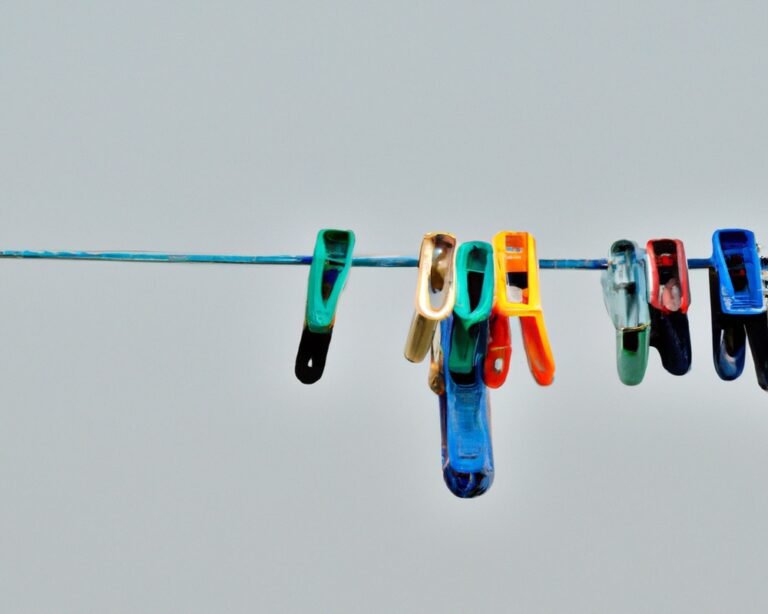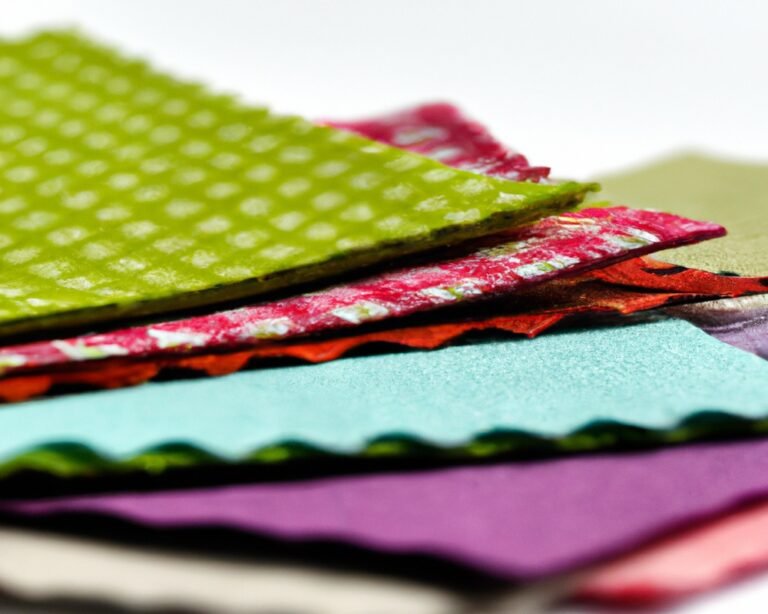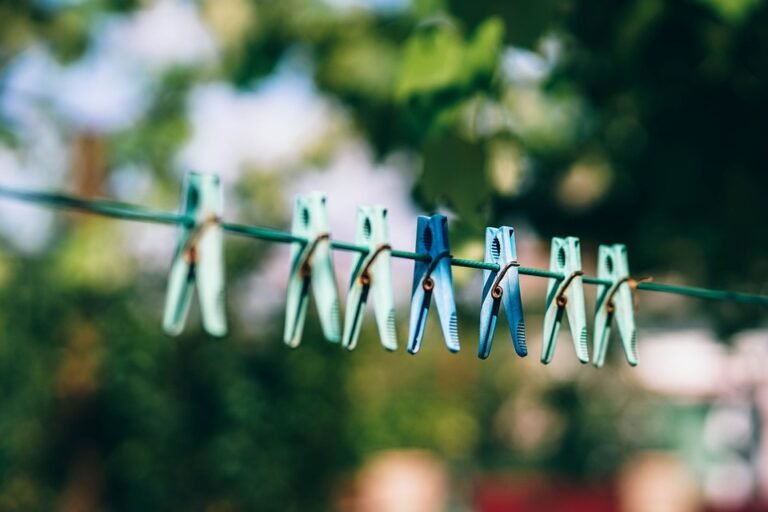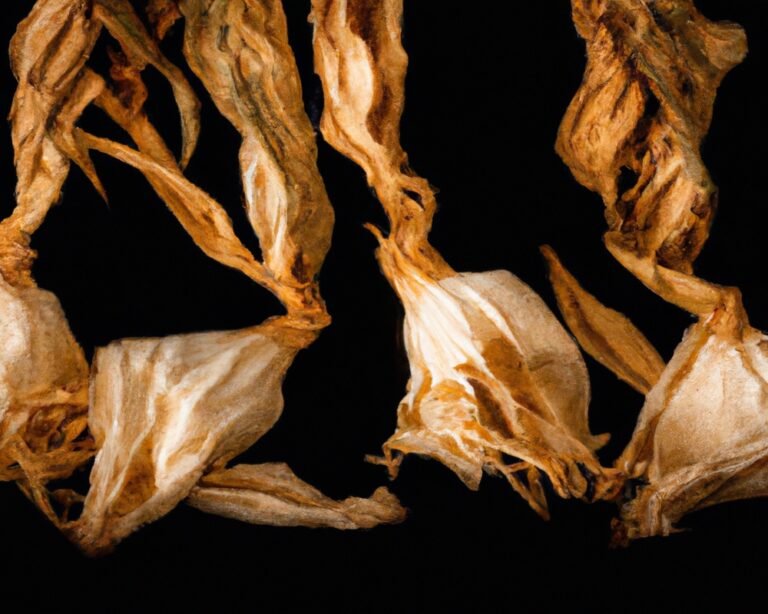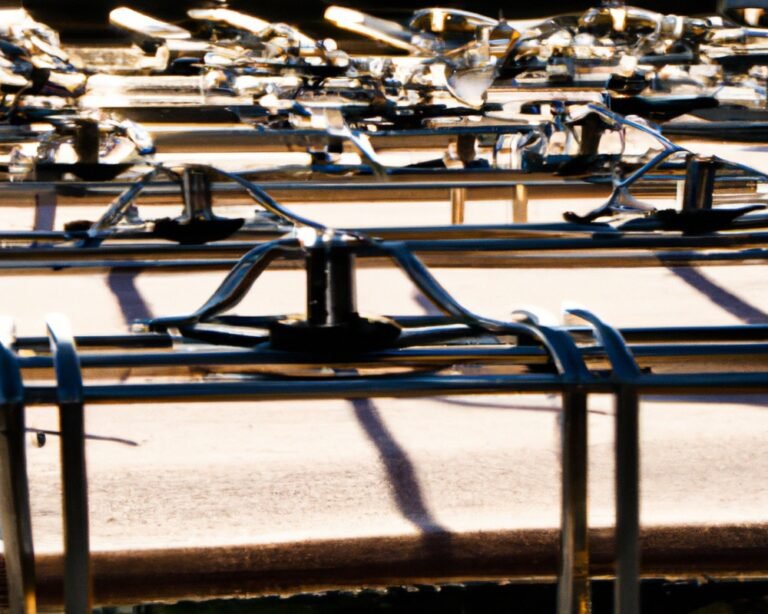Tumble Drying Made Easy: A Guide for Efficient Laundry
Key Takeaways:
- Tumble drying can save you time and effort compared to air drying clothes.
- Regularly cleaning your lint filter reduces the risk of lint buildup and potential fire hazards.
- Overloading the dryer can lead to uneven drying and wrinkled clothes.
- Using the appropriate heat setting for different fabrics prevents shrinking and damage to your clothes.
Picture this: you have a mountain of wet clothes waiting to be dried, but the sun has decided to hide behind thick clouds.
What do you do?
Enter tumble drying, the modern-day solution to hassle-free laundry.
In this article, I’ll dive into the world of tumble drying, exploring its definition, benefits, and best practices.
From saving time and reducing wrinkles to preserving clothing quality, tumble drying offers a convenient way to get your laundry done.
But, like any appliance, there are common mistakes to avoid and safety precautions to keep in mind.
So, whether you’re a tumble drying novice or a seasoned pro, let’s discover everything there is to know about this laundry game-changer.
| Pros | Cons |
| Dries clothes faster | Uses more energy |
| Reduces wrinkles | Can shrink clothes |
| Minimizes static cling | Can damage delicate fabrics |
| Convenient and time-saving | May increase wear and tear on clothes |
What is Tumble Drying?
Tumble drying is a method of drying clothes using a machine that tumbles them in hot air, reducing the need for air-drying or line-drying. It is a convenient and efficient way to quickly dry your laundry.
Definition and Explanation
Tumble drying is a process used to dry clothes quickly and efficiently using a machine called a tumble dryer. It works by circulating hot air through the clothes, causing the moisture to evaporate and the clothes to dry.
The dryer contains a rotating drum that tumbles the clothes, helping to distribute the heat evenly and prevent wrinkles.
Tumble drying is a popular method for drying clothes, especially when time is limited or during colder weather when air-drying is not practical.
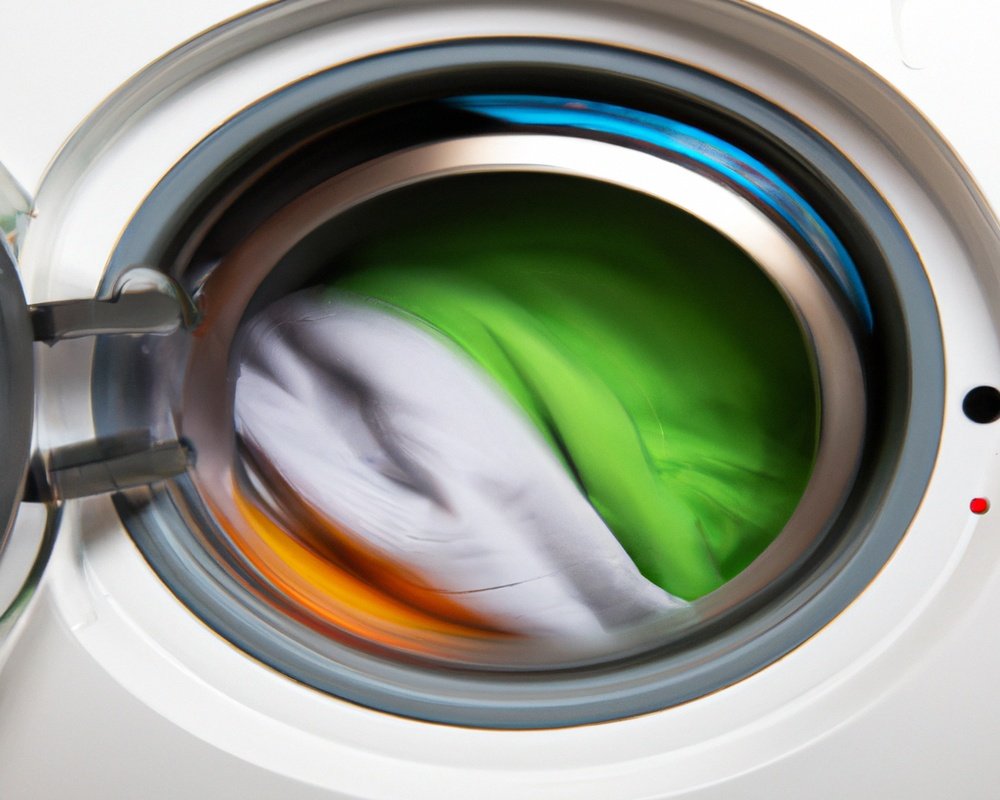
How Does Tumble Drying Work?
Tumble drying is a process that involves using a machine to dry clothes similar to machine drying . It works by spinning the clothes in a drum while blowing hot air on them.
This hot air helps to evaporate the moisture in the clothes, allowing them to dry quickly.
The drum also helps to separate and fluff the clothes, preventing them from wrinkling. Overall, tumble drying is a convenient and efficient way to dry your clothes, especially during rainy or cold weather.

Benefits of Tumble Drying
Tumble drying offers several benefits, including saving time and effort, reducing wrinkles and odors, and preserving clothing quality and color.
Saves Time and Effort
When it comes to tumble drying, one of the significant benefits is that it saves both time and effort. Firstly, it eliminates the need for hanging clothes up to dry, which can be a time-consuming task.
Secondly, you don’t have to worry about waiting for the weather to be suitable for drying your laundry.
Thirdly, it reduces the effort required for ironing, as tumble-dried clothes are generally less wrinkled. Overall, tumble drying is a convenient option that saves you time and effort in your laundry routine.
Reduces Wrinkles and Odors
Reducing wrinkles and odors are two key benefits of tumble drying your clothes. When you tumble dry your garments, the heat helps to smooth out any wrinkles, saving you time and effort in ironing.
Additionally, the drying process eliminates moisture, which helps to prevent the growth of bacteria and unpleasant odors.
So, not only will your clothes come out wrinkle-free, but they will also smell fresh and clean. It’s a win-win situation!
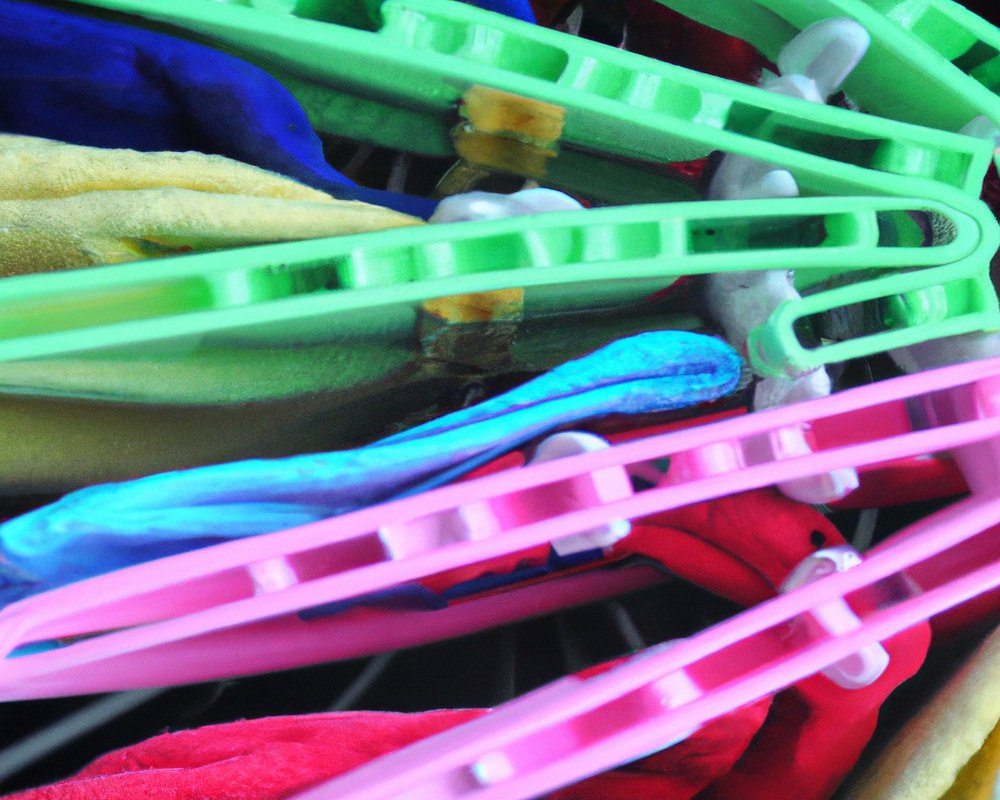
Preserves Clothing Quality and Color
Preserving clothing quality and color is a key benefit of tumble drying.
The gentle and controlled heat helps to maintain the integrity of the fabric, preventing shrinkage, stretching, and fading.
Tumble drying also ensures that colors stay vibrant and vibrant over time.
It’s a convenient way to keep your clothes looking fresh and new without worrying about them losing their quality.
So, if you want to prolong the lifespan and appearance of your clothes, tumble drying is a great option.
Tips for Proper Tumble Drying
To ensure proper tumble drying, follow these tips.
Sorting and Preparing Clothes
Sorting and preparing clothes is an essential step before tumble drying.
Here are some quick tips to help you with this process:
- Sort clothes by fabric type to prevent damage and ensure even drying.
- Remove items with delicate embellishments, buttons, or zippers that may get caught.
- Check garment labels for specific care instructions, such as temperature settings or air-dry recommendations.
- Empty pockets to avoid any surprises while tumbling and protect your clothes.
- Shake out garments to remove excess lint, dirt, or pet hair.
- Consider using dryer sheets or wool dryer balls to reduce static and enhance freshness.
- Separate heavy items, like towels and jeans, from lighter fabrics to optimize drying efficiency.
- Finally, do not overload the dryer. Leave enough space for air circulation to ensure clothes dry effectively.
Choosing the Right Temperature and Setting
Choosing the right temperature and setting is key to ensuring effective tumble drying. Here are a few tips to help you make the right choice:
- Check the care label: Always refer to the clothing’s care label for specific drying instructions. It will indicate the appropriate temperature and setting for that particular item.
- Consider the fabric: Different fabrics require different temperature settings. For delicate items like silk or lace, use the lowest temperature setting, while heavier fabrics like towels and jeans can handle higher heat levels.
- Avoid overheating: Excessive heat can damage your clothes and cause shrinking or fading. It’s better to err on the side of caution and use lower temperatures for longer periods, rather than cranking up the heat.
- Customize the settings: Many modern dryers allow you to adjust the temperature and drying time for personalized settings. Take advantage of these features to meet your specific needs.
- Use the sensor setting: If your dryer has a sensor setting, use it. This feature detects moisture levels and automatically adjusts the drying time, preventing over-drying and excessive heat.
Adding Fabric Softener and Dryer Sheets
Adding fabric softener and dryer sheets are two popular ways to enhance your laundry routine. Fabric softener helps to soften and freshen clothes, while dryer sheets prevent static cling and add a pleasant scent.
To use fabric softener, add it to the designated dispenser in your washing machine or during the rinse cycle.
For dryer sheets, simply toss one or more sheets into the dryer with your clothes. These small additions can make a big difference in the overall comfort and smell of your laundry.
Get ready for softer, fresher clothes!
Common Mistakes to Avoid
Avoid overloading the dryer and neglecting to clean the lint trap and dryer vent.
Overloading the Dryer
Overloading the dryer is a common mistake that many people make. It may seem convenient to stuff as much laundry as possible into the dryer, but it can lead to some serious problems.
Firstly, overloading the dryer can prevent clothes from drying properly.
The items may come out damp or still wet, which means you’ll have to run the dryer again, using more energy and taking up more time. Secondly, overloading the dryer can also cause excessive wear and tear on the machine.
The drum may become unbalanced, leading to loud noises and potential damage to the dryer’s internal components.
Thirdly, overloading the dryer can increase the risk of fires. When there’s too much clothing crammed in, it restricts the airflow, causing lint to accumulate more quickly.
This buildup of lint is highly flammable and can ignite easily, posing a serious safety hazard.
To avoid these problems, it’s important to follow the manufacturer’s guidelines for load capacity and not exceed them. Remember to leave enough space for the clothes to move freely in the drum.
If you have a large load of laundry, it’s better to split it into two smaller loads and run them separately.
Not only will this ensure proper drying and prevent damage to your dryer, but it will also promote safety in your home.
Neglecting to Clean the Lint Trap
Neglecting to clean the lint trap in your tumble dryer can have serious consequences. The lint trap is designed to catch the excess lint and prevent it from clogging the vent.
When the lint trap is not cleaned regularly, it can lead to reduced airflow and overheating, which can be a fire hazard.
Additionally, a clogged lint trap can decrease the efficiency of your dryer, resulting in longer drying times and increased energy consumption. To avoid these issues, make sure to clean the lint trap after each use.
It only takes a few seconds and can save you from potential dangers and unnecessary expenses.
Safe Tumble Drying Practices
To ensure safe tumble drying, follow these practices: prioritize fire prevention and safety, maintain proper ventilation and airflow, and regularly monitor for any issues.
Fire Prevention and Safety Tips
Fire prevention and safety should always be a top priority when using a tumble dryer. Here are some important tips to keep in mind:
- Clean the lint filter before every use to prevent lint buildup, which can be a fire hazard.
- Ensure proper ventilation by keeping the dryer’s exhaust vent clear of obstructions.
- Avoid overloading the dryer, as this can restrict airflow and increase the risk of overheating.
- Never leave the dryer unattended while in use, and be sure to turn it off when you leave your home or go to bed.
- Regularly inspect the electrical cord and plug for any signs of damage, and replace them if necessary.
- Make sure the dryer is placed on a stable surface and not near flammable items.
- Consider installing a smoke detector near the laundry area for added safety.
Proper Ventilation and Airflow
Proper ventilation and airflow are essential for safe tumble drying.
Here’s why:
- Prevents moisture buildup: Adequate ventilation helps remove excess moisture from the drying process. This prevents mold and mildew growth in your laundry room.
- Faster drying time: Good airflow allows hot air to circulate efficiently, speeding up the drying process. This can save you time and energy.
- Protects against overheating: Proper ventilation helps prevent the dryer from overheating. This reduces the risk of fire hazards and extends the lifespan of your machine.
To ensure proper ventilation and airflow:
- Clean the lint filter and exhaust vent regularly.
- Keep the area around the dryer clear of obstructions.
- Consider installing a vent booster fan if your dryer is far from an exterior wall.
Remember, proper ventilation and airflow are key to safe and effective tumble drying.
Monitoring for Any Issues
Monitoring for any issues is an important part of tumble drying. Here are some key things to keep an eye on to ensure safety and optimal performance:
- Check the lint filter: Regularly clean out the lint filter to prevent buildup and improve airflow.
- Inspect the vent: Ensure that the vent is clear of any blockages or obstructions. This will help to prevent overheating and reduce the risk of fire.
- Listen for unusual noises: If you notice any strange or loud noises during the drying cycle, it’s important to investigate further. This could indicate an issue with the machine that needs to be addressed.
- Pay attention to temperature: Monitor the temperature of the dryer during use. If it becomes excessively hot or if you notice a burning smell, it may be a sign of a problem that requires attention.
By regularly monitoring these aspects of your tumble dryer, you can catch any issues early on and take appropriate action to ensure safe and efficient drying.
Alternatives to Tumble Drying
Looking for alternatives to tumble drying? Here are a few options to consider.
Air Drying: Pros and Cons
Air drying is a popular alternative to tumble drying.
Here are some pros and cons: Pros:
- Saves money: Air drying your laundry eliminates the need to use electricity or gas, reducing your utility bills.
- Environmentally friendly: By not using a dryer, you reduce your carbon footprint and energy consumption.
- Preserves clothes: The gentle nature of air drying prevents shrinkage and wear, increasing the lifespan of your garments.
Cons:
- Longer drying time: Air drying takes longer than using a dryer, especially with bulkier items like towels and jeans.
- Weather-dependent: Outdoor drying is influenced by weather conditions, making it less practical during rainy or cold seasons.
- Stiffness: Air-dried clothes can sometimes feel stiff compared to the softness achieved with a dryer.
Overall, air drying can be a cost-effective and eco-friendly option for drying your laundry.
However, it requires more time and is subject to weather conditions.
Using a Drying Rack or Clothesline
Using a drying rack or clothesline is an effective alternative to tumble drying.
It’s a simple and eco-friendly way to dry your clothes.
Plus, it can help you save on energy costs! On a sunny day, hang your clothes outside on a clothesline.
If the weather isn’t cooperating or you don’t have outdoor space, a drying rack indoors works just as well.
Just make sure to give your clothes enough space to air dry properly.
It’s a convenient and sustainable method for drying your laundry!
Frequently Asked Questions
Can all types of fabric be tumble dried?
Can all types of fabric be tumble dried?
Not all types of fabric can be tumble dried.
Some delicate fabrics, like silk or wool, require special care and should not be put in the dryer.
Tumble drying these fabrics can cause them to shrink, warp or lose their shape.
It’s best to check the care label on your clothing and follow the instructions provided.
If in doubt, it’s safer to air dry delicate fabrics to avoid any potential damage.
Is it safe to tumble dry delicate items?
Is it safe to tumble dry delicate items?
Tumble drying delicate items can be risky because the high heat and agitation can damage or shrink them.
It’s best to check the care label before putting delicate items in the dryer.
If the label says “do not tumble dry,” it’s important to follow that instruction.
To keep delicate items safe, you can try using a low heat setting, putting them in a mesh laundry bag, or air drying them instead.
Always err on the side of caution to preserve your delicate items.
Can I tumble dry shoes or accessories?
I wouldn’t recommend tumble drying shoes or accessories. It can cause damage, shrinkage, or even melt certain materials.
Instead, let them air dry naturally.
If you’re in a hurry, use a fan or stuff them with newspaper to speed up the drying process. It’s better to be safe than sorry!
How can I reduce static cling in the dryer?
Static cling can be a frustrating issue when using the dryer. To reduce it, try these simple tips:
- Use dryer sheets: These sheets help neutralize static and infuse your clothes with a fresh scent.
- Dry similar fabrics together: Mixing different materials can create more static.
- Add a damp cloth: Toss in a damp towel or cloth to increase moisture in the dryer and reduce static.
- Use a low heat setting: Higher temperatures can exacerbate static cling, so opt for a lower heat setting.
- Remove clothes promptly: Leaving clothes in the dryer can contribute to static. Take them out as soon as they’re dry.
Try these tricks to say goodbye to pesky static and enjoy fresh, static-free clothes from the dryer!
Is it necessary to clean the dryer after every use?
Cleaning the dryer after every use is not necessary, but it is recommended to perform regular maintenance to ensure its efficiency and longevity. Wipe the interior with a damp cloth or vacuum to remove lint buildup.
Clean the lint trap after each cycle, and periodically check the vent hose for any obstructions.
By taking these simple steps, you can prevent fire hazards and keep your dryer running smoothly.
Final Verdict
Tumble drying is a convenient and efficient method for drying clothes.
It saves time and effort, reduces wrinkles and odors, and preserves the quality and color of clothing.
By following proper tumble drying tips and avoiding common mistakes, you can ensure safe and effective drying.
However, it is important to note that there are alternatives to tumble drying, such as air drying or using a drying rack.
Understanding safe practices, frequently asked questions, and implementing the tips discussed in this article will help you make the most out of your tumble drying experience.
Happy drying!


